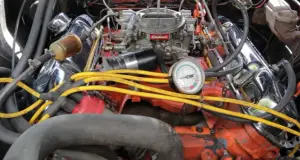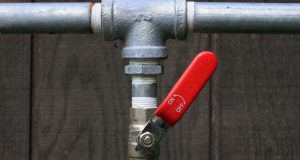How to use Wet and Dry Vacuum Cleaner?
Vacuum cleaners are the most loved and celebrated home cleaning devices. But, day by day, manufacturers try to innovate to help consumers in their daily cleaning routine. One such innovation is the wet dry vacuum cleaner. Earlier, Commercial shops were the only ones who used them. But, now, companies are producing their compact visions for domestic uses.
Wet dry vacuum cleaners are so handy that they make the cleaning process a cool breeze. But, just like its name, it can work both ways; this means it can clean dust and moisture simultaneously. The best part is, it doesn’t mix the dry with wet. So if you have just switched to the wet dry vac from the regular vac, this article is for you as I will share some helpful insights into how you can use your new wet and dry vac.
Work Mechanism of Wet Dry Vacuum
Learning the usage of the device and understanding how the device works are two different things. So Understanding the mechanism of working will make it easier to operate. You will know that you are investing in the right place. So let’s dive into the working mechanism of wet dry vacuum:
- The wet-dry vacuum makes use of two bucket systems. The two bucket systems are used for separating the liquid particles from the solid ones. There is an intake port that sucks up all the dirt and grime. The air will push the collected dirt into a tube along with the other wastes.
- The airflow decreases while the debris passes over the buckets. This decline in airspeed results in a loosen air grip on the particles, with the heavier dirt particles falling into the buckets.
- A motorized fan sucked up the air current, and it leaves through an exhaust port. When it leaves the exhaust port in a wet-dry vacuum, the air contains less dirt content than a regular vacuum as the dirt and debris particles are dissolved in the liquid inside the bucket.
- In addition, the blower function present in most wet vacs gives these devices the ability to expel air out rapidly and draw it in. This particular function is handy when pushing leaves, dust, and other debris into piles before clearing them at the end.
Directions to use a Wet-Dry Vacuum
Wet vac cleaner is not as hard to use as you might think. These vacuums come with an instruction manual. You can use these manuals to seek guidance. You can even watch instructional videos on how to operate them. Nevertheless, you still need to know some fundamental instructions that are the same for each model no matter what model wet dry vac you’re using. So keep scrolling down to learn its usage, as we do not want you to remember your first wet dry vacuum cleaning experience as a terrible one.
Clearing the Hose and Filter Selection
First of all, you need to get rid of the stagnant water from the vacuum hose. Next, you need to put the hose in a bucket and switch on the vacuum cleaner for hose cleaning. Now switch off the vacuum and place the vacuum hose in a dry place. When the hose is filled with water, empty it inside a drum to avoid water spillage. The next critical thing to do is to choose the right filter. Since the wet vacuum can perform multiple cleaning jobs, make sure that you select the correct filter. Still, confused? Well, it’s simple to choose for liquid spills; use the foam filter while the paper filter is used for dry cleaning.
Pick the Right Attachment
A vacuum cleaner comes with multiple attachments, and each of them has a specific use. Moreover, each attachment is linked to the type of cleaning job. For instance, attachments which are narrow in size are perfect for cleaning tight areas, while other brushes, for example, are used for cleaning dust particles. So choose wisely.
Use the Exhaust Portion when Necessary
The exhaust is an added feature to the already existing sucking function. The exhaust attachment differs from the rest of the attachments. Wet vacuums can blow air out of the hose. This particular attachment is suitable for outdoor cleaning more accessible.
Empty the Tub
Emptying the tub regularly is critical, primarily if you frequently use wet vacuum cleaners. Fro emptying the tub, unclip the pegs attached to the lid of the tub to the base. After the lid is removed, you can now empty the contents. It would help if you emptied the vacuum tub immediately after cleaning liquid spills. Allowing the liquid waste to stay long in the tub results in a bad smell.
What else can you do with a Wet Vacuum?
Here are some other ways in which you can use a wet vacuum. You will be amazed to learn these hacks.
- You can use wet-dry vacuums to unclog sinks and bathtubs. Set your vacuum to the blower mode and expose your sink or bathtub to it. Force in the air will remove the items causing the obstruction.
- A hardwood floor can be cleaned and buffed with a wet vac.
- Wet vacuums can clean curtains and upholstery.
- Cleaning fireplaces with wet vacuums have become more accessible as they can suck up the cold ashes.
- Can use wet vacuums blower mode to clear and blow away the snow quickly.
- When combined with a detergent, wet vacuums can be used as carpet cleaners to remove marks, stains, and mildew.
- You can also use wet-dry vacuums to blow out leaves and debris for cleaning gutters and downspouts.
- You can use it to clean up water spills and minor flooded areas as a wet-dry vacuum can suck water.
- Wet dry vacuum can also suck debris such as nails, screws, and wood shavings.
Bottom Line
Wet dry vacuums are so handy in use and such timesavers. A perfect partner for office gong families who don’t have enough time to deal with the regular vacuums. Just remember that the cleaning device also needs cleaning after the job. So when done, clean your vacuum also as instructed above. The more you keep a check on your machine, the more long-lasting its efficiency will be. Keep cleaning.




